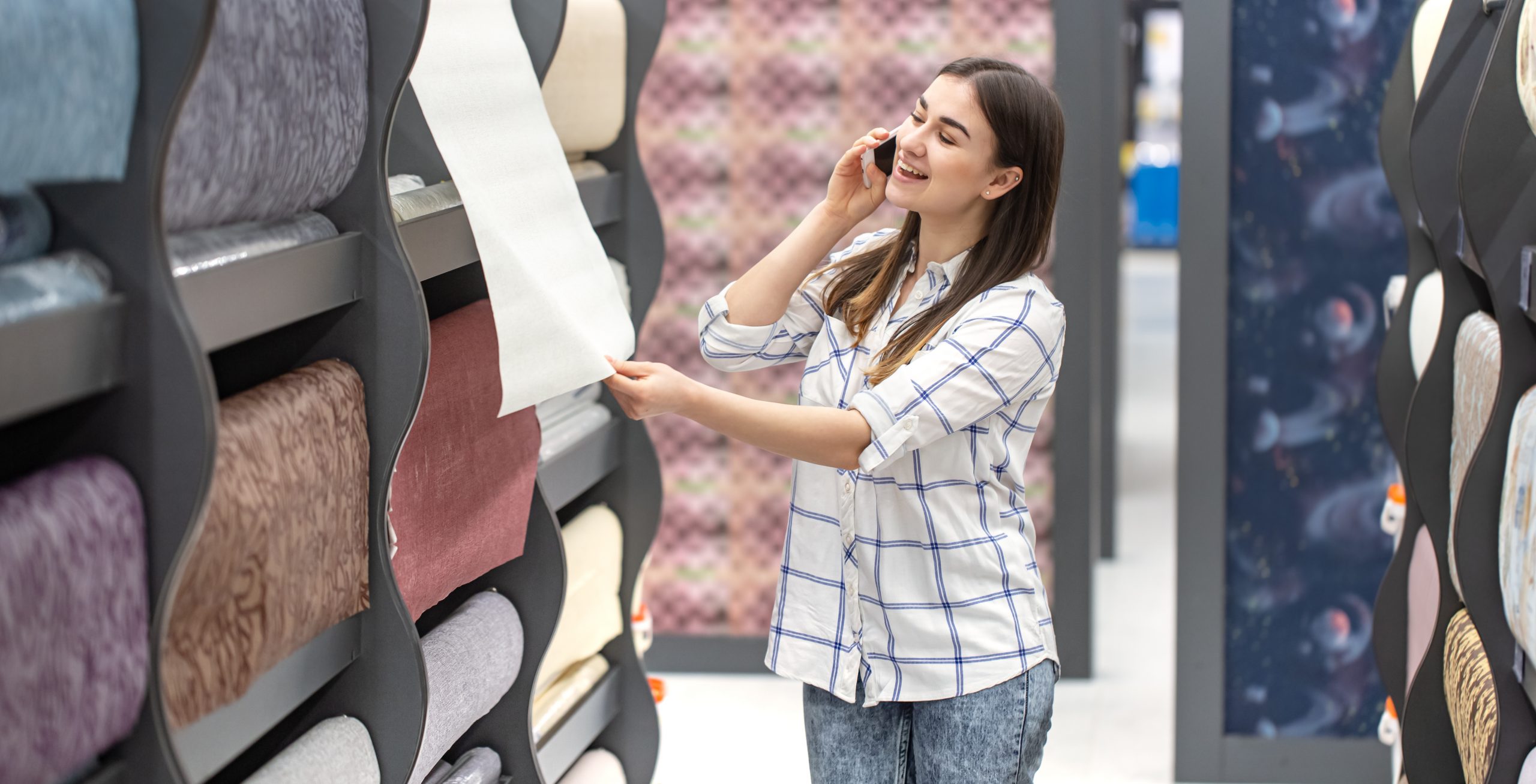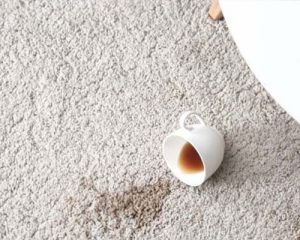Have you ever chosen a new carpet and been disappointed by its appearance after a while?
It’s important that you maintain it and of course, Carpetcare North East can help you with that. However it’s essential that you choose your carpet correctly in the first place. Here we provide you with a guide to some of the main things to consider when purchasing a new carpet for your home in order to help you make an informed choice.
There are so many different things that you could consider when choosing a carpet. There are lots of good retailers out there who will help you make good choices if you ask them to. It’s easy to limit your choice to how a carpet sample looks and feels and how much it costs. Remember your carpet is actually going to get used, unlike the sample, and so you need to think about how it’s going to perform too.
Obviously you will need to ensure you are happy with how the carpet looks and feels. Here are 6 tips on how to choose carpet for your home…
1. Material used to make the pile
2. Construction of the carpet
3. Construction of the pile
4. Count and weight
5. Brand
6. Underlay
1.Material used to make the pile
There are three main fibres used in carpet construction wool, nylon and polypropylene (aka olefin).
Wool – this is the only main natural fibre and is usually the most durable. If you look after it properly it will generally maintain its appearance better than the other two. It’s also usually more comfortable. It will, however, stain more easily so we therefore recommend applying a high quality stain protector. The better manufacturers will only use new wool in production. Recycled wool is used by cheaper manufacturers and the additional processing can adversely affect its performance. Be warned that just because it’s a wool carpet does not mean it will perform well. If it’s crazy cheap, be very careful. It is likely to be an inferior product.
Polypropylene – this is essentially a plastic. It’s a synthetic fibre that is dyed when it is a liquid before it is extruded as a fibre and then spun into a yarn. Just like most plastics you have around the home it is therefore very easy to clean. You can even use bleach to clean it and it won’t lose its colour. It’s also typically cheap. This makes it easy to sell. It is often the right choice for certain areas. However is the worst for flattening and ‘pile burst’. A carpet made from polypropylene won’t ‘wear’ out particularly fast. However it is not that resilient to traffic. It will flatten out easily and the cut end of the pile (with a cut pile carpet – see below) will ‘burst’ like the cut end of a rope and splay out. This can make a carpet look ugly very quickly. We do not recommend cut pile polypropylene carpets are used in high traffic areas like hall/stairs/landing and living rooms unless you are happy for this flattening to occur. You can buy some higher end carpets made from polypropylene which will perform better.
Nylon – this is also a synthetic fibre. You can get really cheap and nasty nylon carpets and some very expensive, high-end nylon carpets. Typically if it’s really cheap, don’t expect it to perform that well. There’s such a huge range in quality of nylon carpeting that we cannot advise how it is going to perform in a general sense. However as a very rough guide in terms of ‘cleanability’ it falls in between wool and nylon. In terms of durability to traffic, it will perform better than polypropylene and not as well as wool (generally). Nylon carpets can be printed after they are woven to create all sorts of patterns. Otherwise the fibres are dyed after production and tufted into the carpet. This means they will bleach easily.
Blends – a lot of carpets are made with a blend of wool with some synthetic fibre. 80/20 is a common blend where the carpet is 80% wool and 20% synthetic. This is an extremely common type of fibre blend used in the UK. Carpets made from blends seek to mix the reslience of wool with the cleanability of synthetic fibres. There is also a huge variance in quality of blended carpets. Some are very low end and others are very high quality indeed. You can get carpets which are 50% wool and 50% synthetic which tend to be a bit cheaper.
2.Construction of carpet
There are three broad ways in which carpets are made: woven, tufted, felt backed.
Woven – woven carpets are generally at the premium end of carpeting. The main types of weave are Axminster and Wilton. You’ll get more patterns in an Axminster carpet. Woven, made with wool, carpets are often used in commercial environments because they will perform a lot better. A very common woven carpet made with a polypropylene fibre is a ‘Belgian Wilton’. Belgian Wilton’s typically have bright, bold colours and are highly patterned. A common feature of woven carpets is that they shrink more easily when cleaned. A good quality professional carpet cleaner will recognise a woven carpet and take proper precautions to prevent this happening. Belgian Wilton carpets will shrink more easily than any other carpet on the market. Apart from Belgian Wiltons, woven carpets are usually made with a wool pile. A high quality woven carpet (made with wool) will usually be a good choice for high traffic areas such as living rooms and hall/stairs/landings.
Tufted – Most carpets are tufted (also known as secondary backed). There is a huge range within tufted carpets from cheap and nasty to very high end. The highest end tufted carpets hold their own against woven carpets. However you also have a very low bottom end too which will not perform well.
Felt backed – These are typically budget carpets. They are usually fitted without an underlay as the felt backing provides a certain amount of cushion. The fibre type is almost always synthetic. A cut pile (see pile construction below) will flatten out and look ugly quickly (usually) in a high traffic area.
3.Construction of pile
Most carpets are made with a cut pile. Whether woven, tufted or felt-backed, a yarn (of wool, nylon or polypropylene) passes through the backing material in one spot and then goes back through in slightly different spot. This forms loops on both sides of the backing material. The loops on the back are usually tight to the backing material. On the face side they can vary in length. To make a cut pile carpet the top of the loops are cut off on the face side of the carpet. This creates a u-shaped tuft which you can pull out from the carpet.
Cut pile – where you have the ‘cut ends’ of the yarn, you have a point of weakness. As these cut ends are exposed directly to traffic they can ‘splay’ like the end of rope. How susceptible they are to this depends on a number of things including the fibre type (wool, nylon, polypropylene), how well the yarn was spun, the thickness of the yarn etc. The appearance provided by cut pile carpets is obviously the most popular which is why it is used. Cut pile polypropylene carpets will generally flatten out in high traffic areas (although there are some higher end polypropylene carpets which will perform better).
Loop pile – carpets can be constructed where the top of the loop is not cut. Usually these loops are fairly tight to the face of the carpet. If you are choosing a polypropylene carpet you might want to consider a loop pile. This will dramatically reduce the flattening problem suffered by cut pile polypropylene carpets and cheaper nylon carpets. This way you can enjoy the easy cleaning of synthetic fibre carpets without the degree of flattening. Note; unlike a cut pile which is broken up with lots of u-shaped tufts, if you snag a loop on a loop-pile carpet it can pull a whole row. This can be a real problem when lifting carpets after installation.
Multi-level loop – all the same factors apply to this type as above. Multi-level loops are used to create a ‘textured’ appearance on a carpet. You can get rows which are higher than others to create this effect.
Cut and Loop – A bit like multi-level loop, but here the higher loops are cut to create a different style.
4.Count & Weight
When carpets are tufted or woven a factor which has a significant impact on the quality is the ‘count’. This is the measure used to describe the number of tufts per square inch. The more tufts per square inch the higher the count and vice versa. The higher the count, the higher the quality (all other factors considered) and the more expensive it is likely to be.
Weight refers to the weight of the face material. The higher the weight, the more material is used in construction and this usually means a higher quality carpet.
When buying a carpet you will often find details of count and weight on the back of samples. You may wish to discuss these factors with your retailer to get their advice on how it may impact the performance of the carpet you are choosing for the area you intend to install it.
5. Brand
There are a number of good brands out there that you should also place value on when selecting a carpet. They will often do things to carpets which you cannot discern, but which may have a significant impact on performance.
Here are some of the names of the well respected brands out there: Brintons, Ryalux, Causeway, Ulster, Victoria Carpets, Westex, Cormar, Brockway, Axminster, Pownall.
6.Underlay
We strongly recommend that you invest in a high quality underlay. This underlay provides ‘cushion’ to the carpet. The better the underlay the better performance you can expect from you carpet.
I hope you find this guide on how to choose a carpet useful. If you have any questions about this or would like any other advice on carpet care, please don’t hesitate to contact us here at Carpetcare & Upholstery North East.





